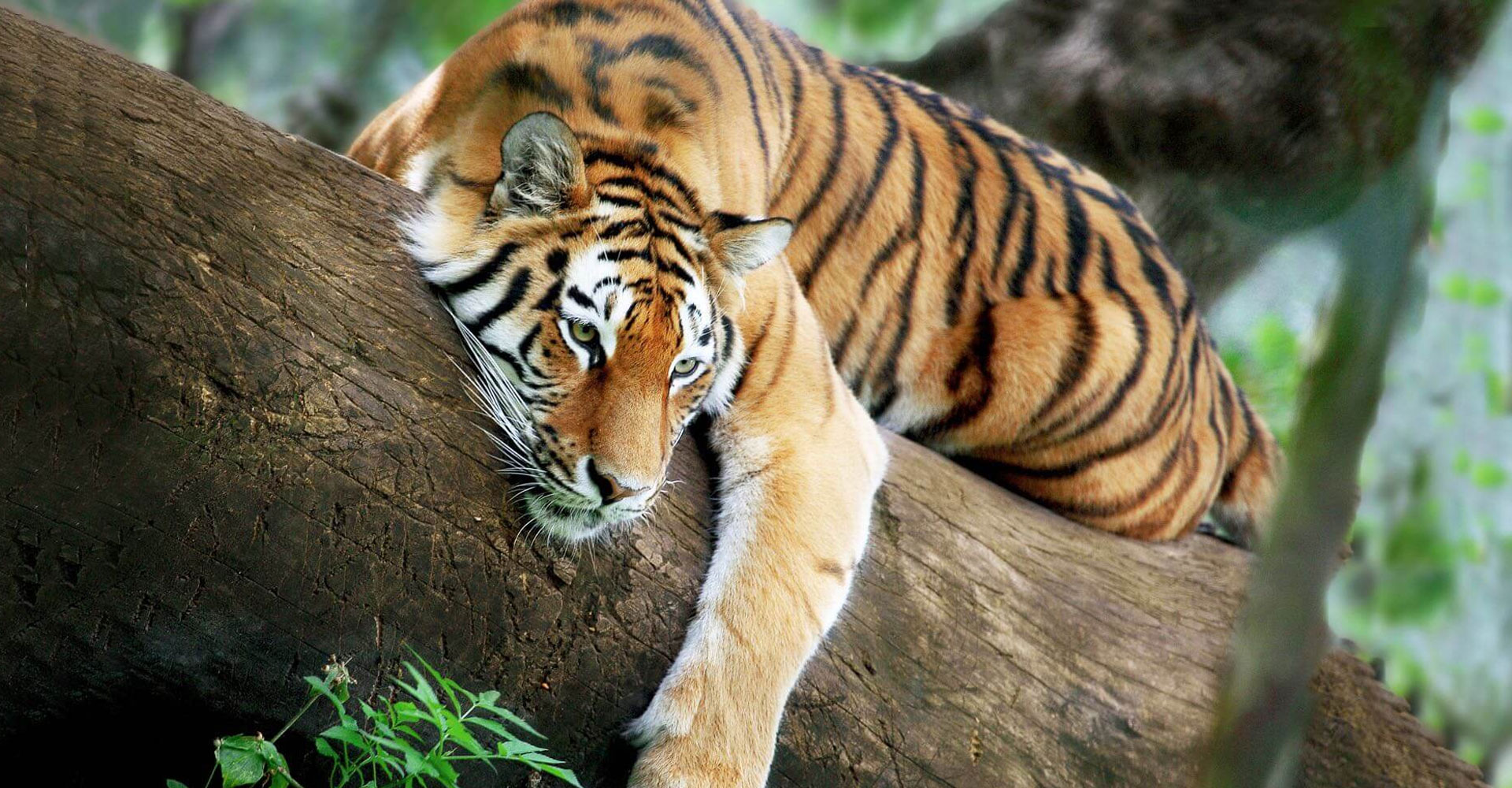Tadoba National Park
Best Time To Visit
Jan
Feb
Mar
Apr
May
Jun
Jul
Aug
Sep
Oct
Nov
Dec
Most Popular
High Sighting
Park Closed
Low Sighting
About Tadoba National Park
Species
Tiger, leopard chital, langur, crocodile, dhole, sloth bear, gaur, peacock
Overview
Tadoba-Andhari Tiger Reserve, located in the Chandrapur district of Maharashtra is the oldest national park in the state. It was declared a Project Tiger Reserve in 1993. Tadoba is bursting with life and animals like the tiger, leopard, sloth bear, hyaena, jackal, wild dog, blue bull and sambar inhabit the reserve. The park features thick teak forests and a beautiful lake. Scenic treks with interesting wildlife sightings are assured at Tadoba and it is rightly called 'The Jewel of Vidharba'. Tadoba National Park was christened after the local God Taru, who is worshipped as 'Tadoba'.
Legend holds that Taru was apparently a village chief who was killed in a mythological encounter with a tiger. A shrine dedicated to the God Taru exists even today beneath a huge tree, on the banks of the Tadoba Lake. The temple is frequented by adivasis, especially during the fair held every year in the Hindu month of Pusha, between December and January. Tadoba lies in the Moharli hills of the West Chandrapur Forest Division of Maharashtra. The terrain is hilly with a gradual slope from north to south. The altitude of the hills averages about 200-350 m. The Tadoba Lake is a 120 ha. water body located in the heart of the reserve. This lake is a perennial water source that the area depends on, especially during the dry summer months. Other wetland areas within the reserve include the Kolsa lake and Andhari river. Thick forests are relieved by smooth meadows and deep valleys. Cliffs, talus and caves provide refuge for several animals. Taboda is bursting with life. It houses several endangered species.
The apex species of the reserve is the tiger Panthera tigris. The leopard P. pardus and the jungle cat Felis chaus are some of the other carnivores that share these forests. The jackal Canis aureus, hyaena Hyaena hyaena, Indian wild dog Cuon alpinus, civet cat, sloth bear Melursus ursinus may also be encountered. The reserve is also renowned for the gaur or wild ox Bos gaurus. Large herds of chital Axis axis and sambar Cervus unicolor may be seen. The sturdy nilgai Boselaphus tragocamelus and the swift-footed four-horned antelope Tetracerus quadricornis are also residents of this reserve. The muntjac Muntiacus muntjac, chevrotain Tragulus meminna, common langur Presbytis entellus, flying squirrel and wild boar Sus scrofa also abound. Crocodiles Crocodylus palustris are another highlight of the reserve. The reptilian fauna includes thirteen recorded species including three species that are endangered, namely the Marsh Crocodile, Indian Python and the Common Indian Monitor. Terrapins, star tortoises, the cobra and Russel's viper also occur in Tadoba. Tadoba is also an entomologist's paradise. 74 species of butterflies have been recorded including the pansies, monarch, mormons and swordtails. Two endangered species include the Danaid Egg Fly and the Great Egg Fly. Dragonflies, stick insects, jewel beetles and the praying mantis are other insects in the reserve. The signature spider, giant wood and red wood spiders are often seen in the monsoon and soon after. Some hunting spiders like the wolf spiders, crab spiders and lynx spiders are also common.
Trails and Excursions
There are several machans in the reserve, one at the Panchadhara waterhole, another at the Vasant Bhandara waterhole, two around the Tadoba lake and another at Jamunbadi. You may travel by Forest Department buses or jeeps to any of these locations except Vasant Bhandara, which is a 5 km trek from the reception centre. A stroll along the road around the Tadoba lake provides for good wildlife viewing. Chital are commonly seen in the grasslands and around the lake and the tourist complex. Gaur also exist in large numbers near the lake or in the grassy patches. Troops of the Hanuman langur play frivolously on the overhanging branches of trees bordering the lake. Large populations of the mugger crocodile reside in the Tadoba lake. But they may sometimes be seen sunning themselves on forest paths near the lake. Nilgai maybe spotted, either solitary or in pairs, in the early mornings and late evenings. The sloth bear prefers hilly terrain, and you may often see them behind the tourist complex or near Vasant Bhandara. Lairs of the bear, leopard and tiger may be seen en route from the reception centre to Vasant Bhandara. The sloth bear is also found in the heart of the forests at Katezari, which now forms part of the core forest. Dhole is seen ubiquitously throughout the reserve. Hyaenas are not as common, but you may occasionally be surprised by one of them near thickets. Tigers and leopards are elusive and sightings are rare. There are fairly good chances of spotting the tiger at Panchadhara. The palm civet may be seen on trees, and flying squirrels also make an appearance at dusk. The blacknaped hare is commonly encountered along a route called Sasa road. ('Sasa' is hare in Marathi)
How To Reach
By Air:
Nagpur airport is 205 km away via Chandrapur; 140 km via Chimur.
By Rail:
The nearest railhead is Chandrapur, 45 km from the park.
By Road:
You may enter the park from the Khatoda gate at Moharli or via Chimur. State transport buses ply from Chandrapur. Taxis and Jeeps from Nagpur or Chandrapur are other options. Chandrapur is 45 km from the park; Chimur is 32 km away.
Tips:
Visitors are permitted inside the park from 6 a.m. to 11 a.m. and 3 p.m. to 6 p.m on all days except Tuesday, when the park is closed. A trip lasting at least three-four days is recommended. Two/three-wheelers are not permitted within the park. Guides are compulsory with every vehicle entering the reserve.




